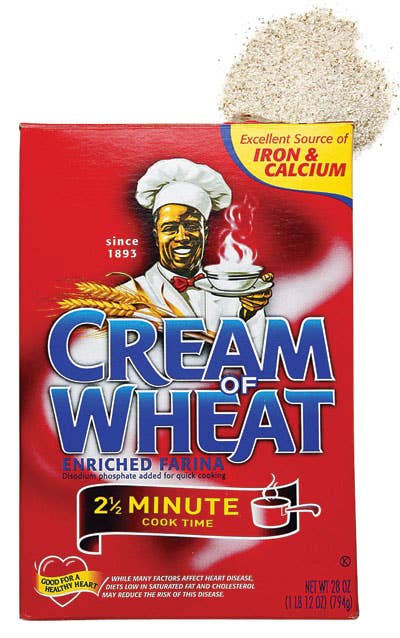
Wheat Wonder: Cream of Wheat
This recipe for cranberry mousse is one passed down by my maternal grandmother, Rhoda Gurevich. She was a native of Latvia, where they call the dessert debesmanna, or heavenly farina—an apt name indeed. Made from cranberry juice that's boiled with sugar and cooked with farina (or Cream of Wheat, as most of us know the ingredient in the States), it is whipped until light and fluffy. When the recipe first made the rounds at the saveur office, everyone was fascinated to see that farina, a fine-grain cereal made from the endosperm of hard red wheat kernels, could be used as a vehicle for making an airy mousse. How did that work? Paula Figioni, associate professor of food science at Johnson & Wales University, explained. "With whipping, it's all about trapping air by forming a flexible film around the air bubbles," she said, "then having enough structure in the film so that the bubbles don't escape. Both wheat gluten and wheat starch are film formers, and both provide thickening, for stability."
When my mother, Anna Gershenson, came to the Saveur kitchen to demonstrate the recipe, we found that, depending on the temperature of the cranberry-farina mixture, when whipped, the consistency varied dramatically. If she cooled the mixture, it would produce denser, glossier results. If she whipped it while it was warm, the dessert tripled in volume and was far airier. "As the starch cools, it becomes more rigid and therefore doesn't have the flexibility to form a film around newly formed air bubbles," explained Figioni. In Latvia, variations of the dessert are made with cherry juice, black currant juice, and strawberry juice. What they all have in common, apart from being delicious, is acidity, which probably contributes to the airiness of the dessert. "Wheat gluten becomes stretchier in the presence of acid," Figioni said, "so the acid likely improves volume."
Keep Reading
Continue to Next Story










